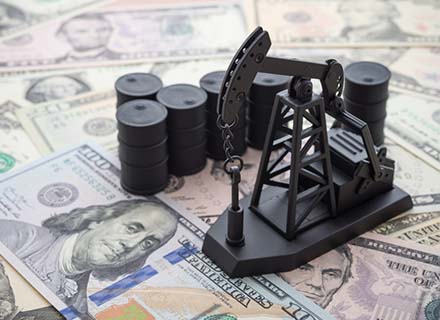On February 22, oil futures rose despite the Houthi attacks on Red Sea commercial shipping. The reason behind the rise was a large build in United States crude inventories curbing gains.
Brent crude futures went up by 51 cents to USD 83.54 a barrel. On the other hand, US West Texas Intermediate crude futures were up 64 cents at USD 78.55 a barrel.
“[Hostilities] in and around the Red Sea by Iran-backed Houthi rebels on commercial ships are guaranteed to continue keeping the geopolitical risk premium at an elevated level,” PVM Oil’s Tamas Varga told Reuters.
United States crude inventories rose by 3.5 million barrels to 442.9 million barrels in the week ending February 16, the US Energy Information Administration (EIA) said, compared with analysts’ expectations in a Reuters poll for a 3.9 million-barrel rise.
“US crude inventories have climbed amid outages at large refineries that have left utilisation rates at the lowest level in two years, though the plants are soon to resume output,” Reuters stated further.
Refinery utilization rates were unchanged during the middle week of February 2024, at 80.6%, according to EIA data, compared with analysts’ expectations of an uptick to 81.5%, according to a Reuters poll.
BP’s 435,000 barrel-per-day (bpd) Whiting refinery in Indiana, the largest in the US Midwest, will return to full production capacity in March 2024, after a power outage since February 1.
“TotalEnergies’ 238,000-bpd refinery in Port Arthur, Texas, is also working to complete a restart, though it is still operating minimally following a weather-related power outage. The outages have drawn down distillate inventories, which include diesel and heating oil. Those stockpiles were down by 4 million barrels in the week to 121.7 million barrels, versus expectations for a 1.7 million-barrel drop,” Reuters reported further.
Volatility Strikes
However, oil prices registered a fall on February 26, extending losses on market views that higher-than-expected inflation could delay cuts to high-interest rates that have been capping growth in global fuel demand.
Brent crude futures fell 39 cents, or 0.5%, to USD 81.23, whereas US West Texas Intermediate crude futures (WTI) were down 34 cents, or 0.4%, at USD 76.15.
Despite the February 22 rise, Brent lost about 2% and WTI fell more than 3% on signs that the United States Federal Reserve was in no hurry to cut interest rates.
In fact, market sentiment appeared focused on higher-for-longer interest rate expectations that lifted the US dollar and pressured commodity prices, as per the observations of independent analyst Tina Teng.
A stronger dollar makes oil expensive for buyers with other currencies. Prices have been trading between USD 70-90 a barrel since November 2023 as rising supply and concern over weak Chinese demand offset OPEC+ supply cuts despite two wars raging in Ukraine and Gaza.
“The geopolitical risk premium on Brent crude from Yemeni Houthis on ships in the Red Sea remained modest at only USD 2 a barrel,” stated Reuters, while quoting Goldman Sachs analysts.
However, Goldman Sachs has raised its summer peak price projection for oil to USD 87 a barrel, up from USD 85, after Red Sea disruptions drew larger than expected draws in stocks held by developed countries.

